The Treaty establishing a Constitution for Europe, commonly referred to as the European Constitution, was a draft treaty intended to replace existing European Union (EU) treaties with a single, consolidated document. It was signed on October 29, 2004, but never ratified due to rejection in referendums in France and the Netherlands in 2005. Despite its failure to come into force, the draft European Constitution had a significant influence on the subsequent reform of the EU, particularly in the form of the Treaty of Lisbon (2007), which adopted many of the Constitution’s provisions.
The Constitution was designed to simplify and streamline the EU’s functioning, make its governance more democratic and transparent, and improve its decision-making processes. The main provisions of the Treaty on the European Constitution are outlined below:
I. Institutional Reforms
- The European Council:
- The European Council (comprising the heads of state or government of EU member states) was formally recognized in the Constitution as the primary political body responsible for setting the EU’s general direction and priorities.
- The position of European Council President was introduced, with a two-and-a-half-year renewable term, a significant step towards a more permanent leadership role in EU governance.
- European Parliament:
- The European Parliament’s powers were significantly extended under the Constitution.
- The co-decision procedure (now known as the ordinary legislative procedure) was expanded, giving Parliament more influence over EU legislation alongside the Council of the EU.
- Parliament was also given a right to approve the EU budget, strengthening its role in financial matters.
- The European Commission:
- The role of the European Commission was preserved, but with a reduction in its number of Commissioners. The Constitution proposed the creation of a team of 15 Commissioners, with the possibility of rotating the membership of the Commission, thus ensuring that only the most important portfolios were covered at any time.
- The Commission’s powers to initiate legislation remained central to the functioning of the EU.
- European Court of Justice:
- The European Court of Justice (ECJ) remained the final arbiter of EU law, with its role in ensuring uniform interpretation of EU law across member states being further consolidated.
- The Constitution proposed some changes to improve access to the Court for individuals and entities, especially concerning fundamental rights.
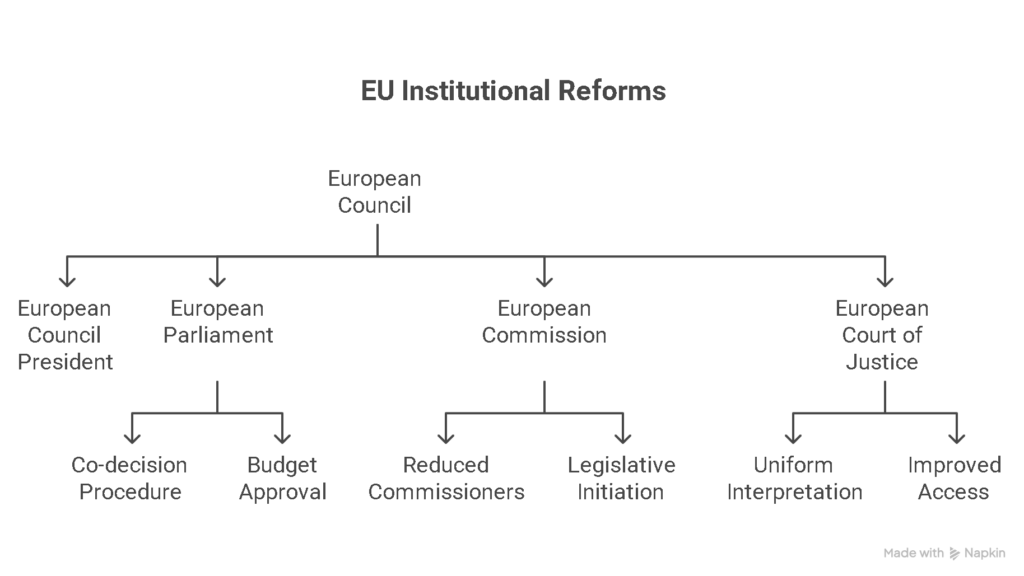
II. Decision-Making Processes
- Qualified Majority Voting (QMV):
- The decision-making process within the Council of the EU was significantly reformed.
- The Constitution proposed a shift towards qualified majority voting in a wider range of areas, reducing the need for unanimity in decisions and thus making the decision-making process more efficient.
- QMV would be calculated using a double-majority system: a majority of member states (at least 15 out of 25, at the time of the Treaty’s drafting) and a majority of the population (representing at least 62% of the EU’s total population). This was designed to reflect both the number of states and the size of their populations.
- The Role of National Parliaments:
- The Constitution aimed to strengthen the role of national parliaments by providing them with a mechanism to scrutinize proposed EU legislation.
- National parliaments could send “reasoned opinions” to the Commission if they felt that proposed legislation violated the principle of subsidiarity (i.e., the principle that decisions should be taken at the most local level possible).
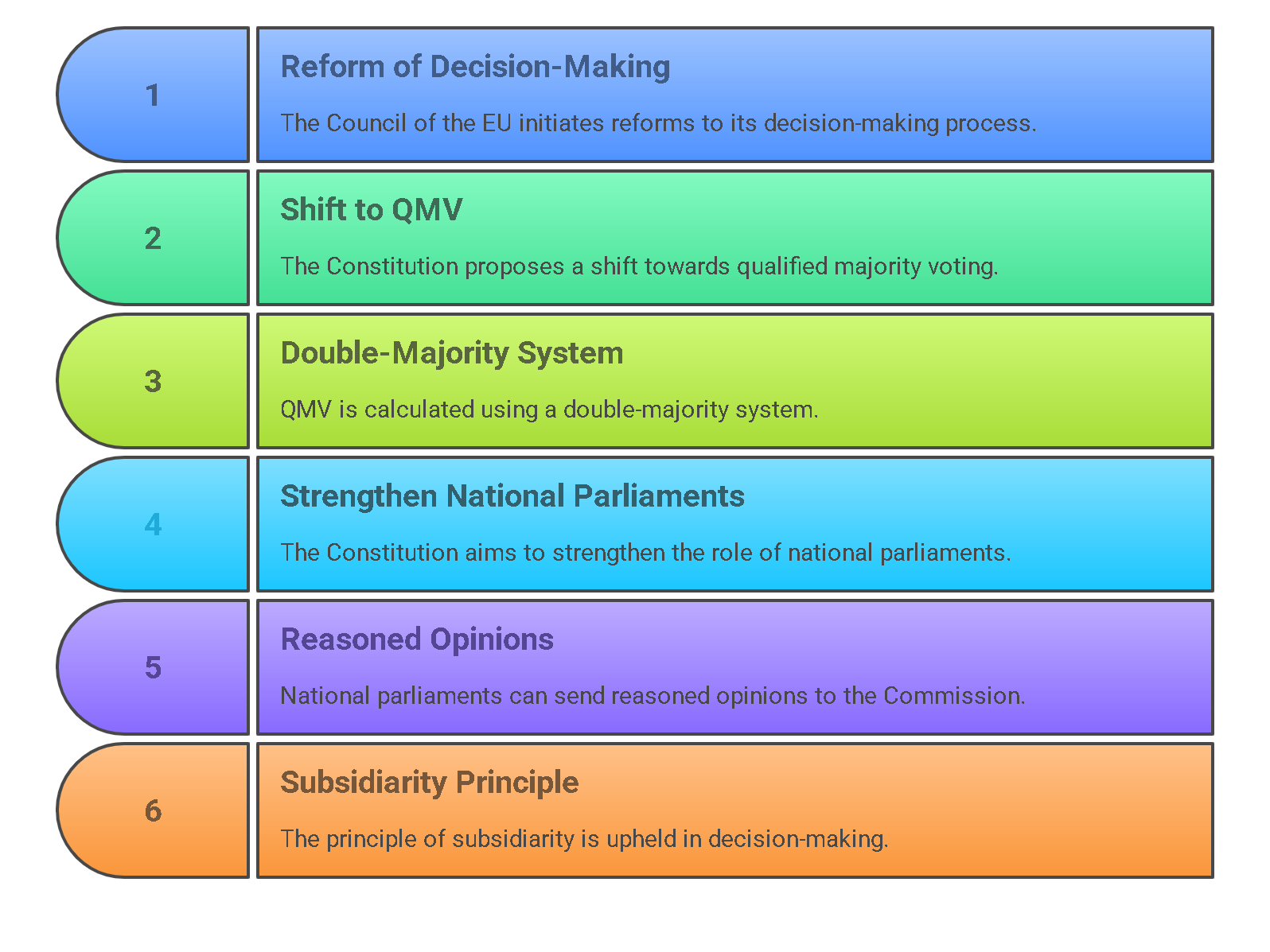
III. Fundamental Rights and Citizenship
- Charter of Fundamental Rights:
- The Constitution incorporated the Charter of Fundamental Rights of the European Union, giving it legal force. The Charter outlined a range of civil, political, economic, and social rights for EU citizens, covering topics such as equality, non-discrimination, workers’ rights, and data protection.
- The European Court of Justice would be empowered to enforce these rights, ensuring their application across the EU.
- European Citizenship:
- The Constitution affirmed the rights of EU citizens, which included the right to live, work, and vote in any EU country. This reinforced the concept of European citizenship, complementing national citizenship.
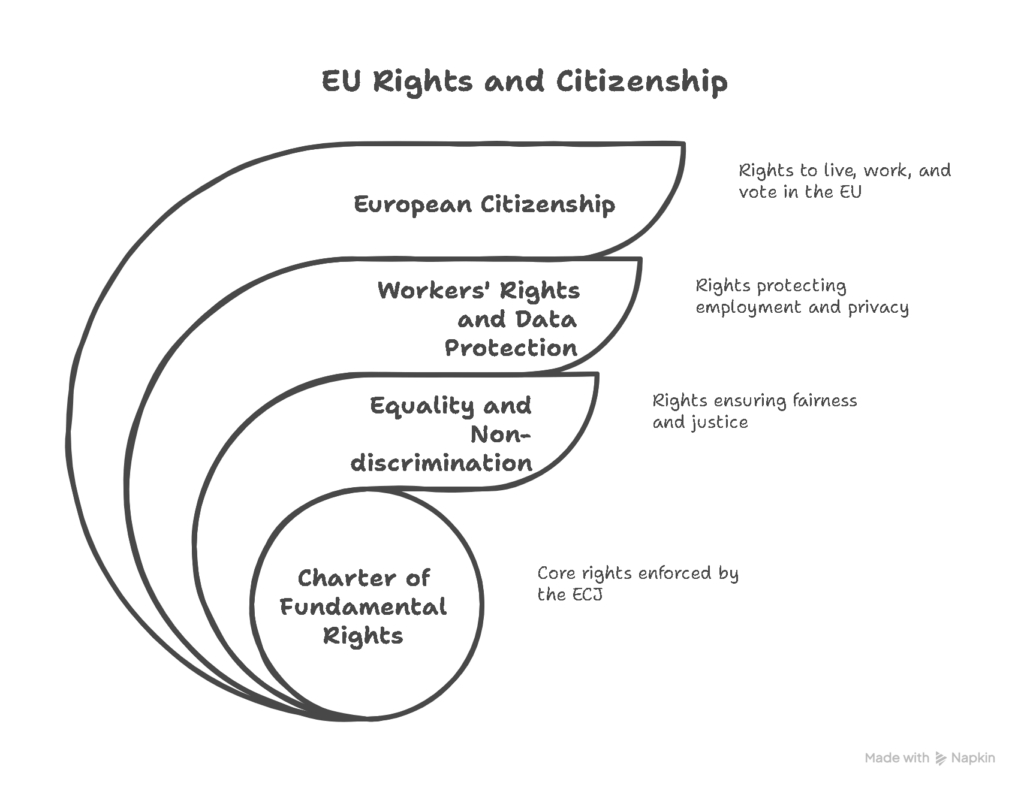
IV. Enhanced Cooperation and Foreign Policy
- Enhanced Cooperation:
- The Constitution introduced provisions for enhanced cooperation, allowing groups of member states to deepen integration in specific areas even if not all member states wish to participate. This provision was particularly useful in areas like defense and social policy, where certain member states wanted to pursue more advanced integration without waiting for consensus among all EU countries.
- Common Foreign and Security Policy (CFSP):
- The Constitution proposed a single legal personality for the EU in foreign relations, enabling the Union to speak with a unified voice on the world stage.
- The role of the High Representative for Foreign Affairs and Security Policy was strengthened, and the creation of a European External Action Service (EEAS) was foreseen to manage the EU’s foreign policy.
- The Constitution aimed to align EU foreign policy more closely with the principles of democracy, human rights, and the rule of law, marking a shift toward a more coherent global presence.
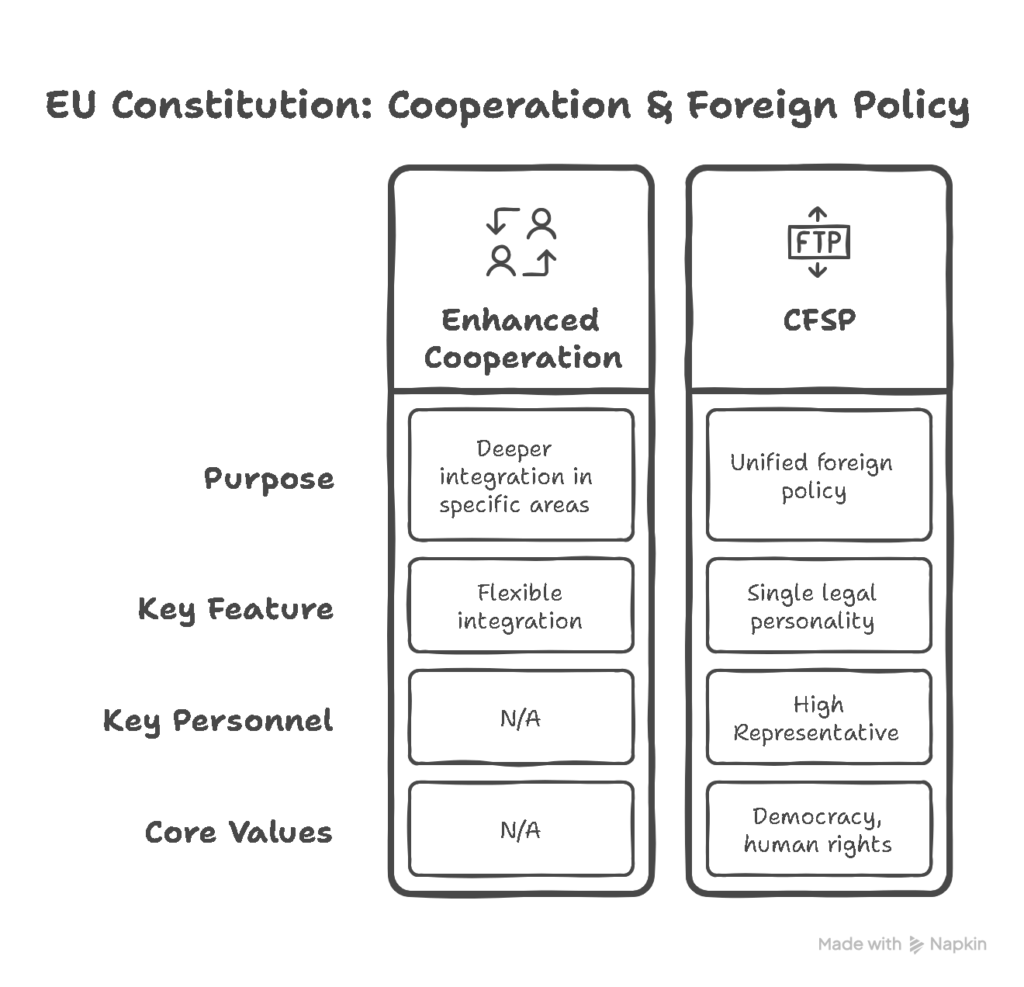
V. Simplification of the Treaties
- Codification of EU Law:
- One of the primary objectives of the European Constitution was to simplify and consolidate the existing EU treaties (including the Treaty of Rome, the Maastricht Treaty, the Treaty of Amsterdam, and others) into a single, comprehensive document. This was intended to make the EU more understandable to its citizens and facilitate its institutional functioning.
- The Treaty establishing a Constitution for Europe sought to replace the complex and fragmented treaties with one coherent and accessible text.
VI. Ratification and Outcome
Despite its ambitious provisions, the Treaty establishing a European Constitution faced significant resistance. In 2005, France and the Netherlands held referendums in which voters rejected the Constitution. The lack of popular support, combined with fears of losing national sovereignty, led to the abandonment of the treaty. However, many of its key provisions were later incorporated into the Treaty of Lisbon, which came into effect in 2009. The Lisbon Treaty preserved the majority of the Constitution’s proposals, including the strengthened powers of the European Parliament, the double-majority voting system in the Council, and the increased role of national parliaments.
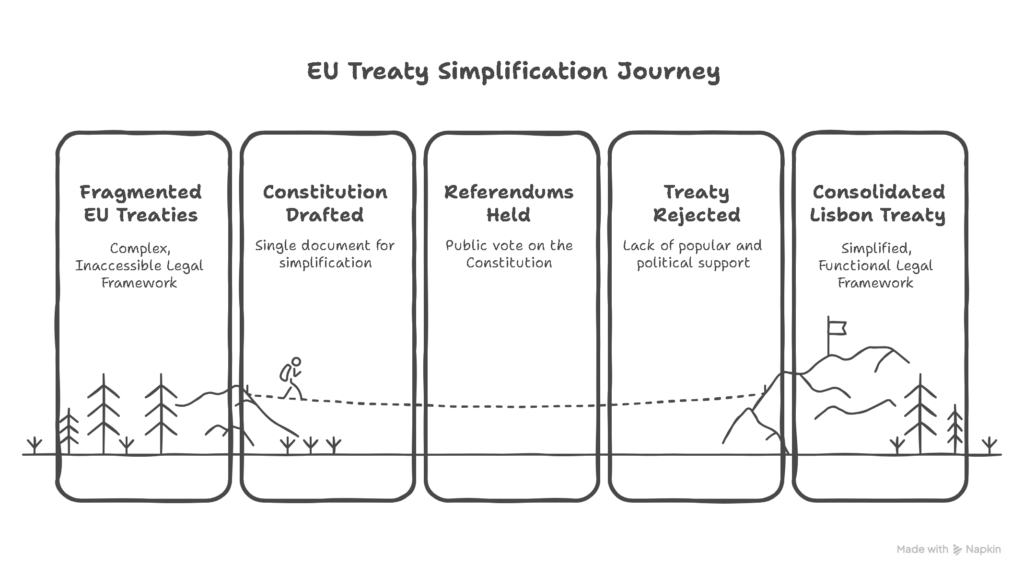
Conclusion
The Treaty establishing a Constitution for Europe represented an ambitious attempt to overhaul the governance and institutional framework of the European Union. While it did not come into force, the core elements of the Constitution were largely adopted in the Treaty of Lisbon, ensuring that its legacy lived on. The European Constitution’s provisions reflected the EU’s desire to modernize its structures, improve decision-making efficiency, and enhance democratic accountability, all of which remain central to the ongoing evolution of the Union.
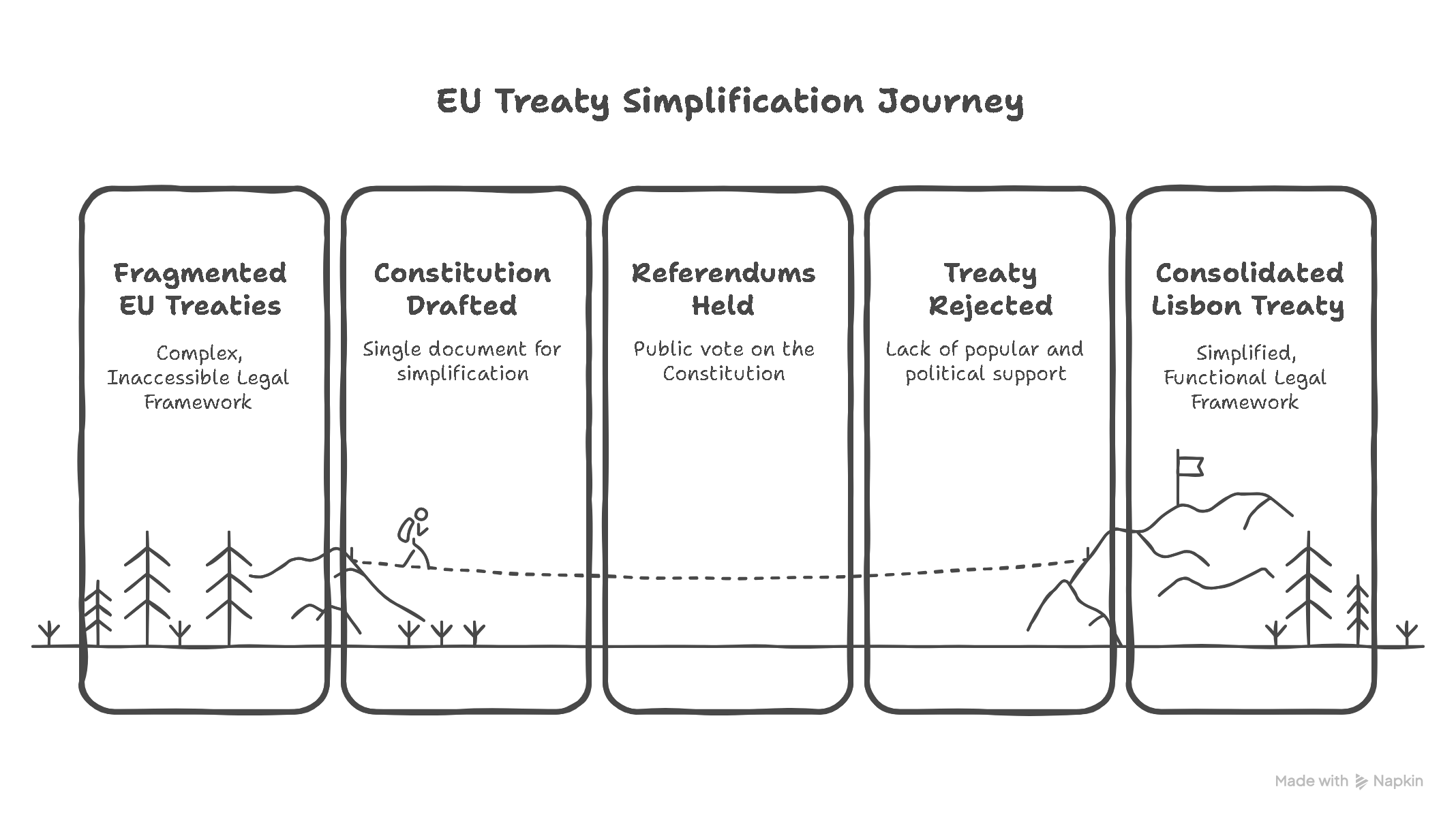





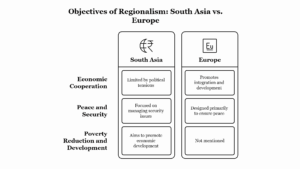

Leave a Reply